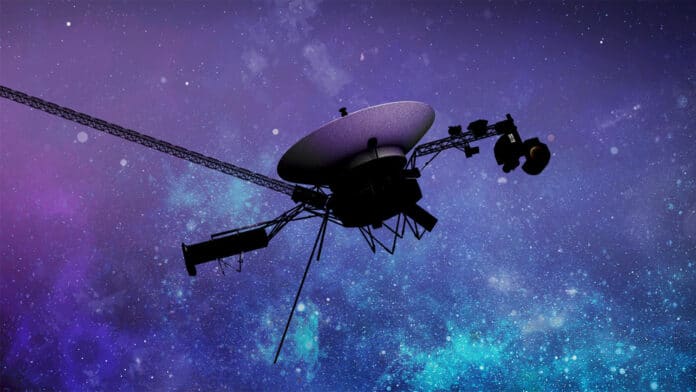Since November 2023, NASA’s Voyager 1 spacecraft has been transmitting a radio signal back to Earth. However, the signal does not contain any usable data. It seems that one of the three onboard computers, the flight data subsystem (FDS), is experiencing issues. The FDS is responsible for packaging the science and engineering data before it is sent back to Earth via the telemetry modulation unit.
On March 3, the Voyager mission team noticed unusual activity from a specific section of the FDS. This activity seemed different from the rest of the computer’s unreadable data stream. The team initially didn’t know what to make of it since the new signal wasn’t in the format used by Voyager 1 when the FDS was functioning correctly.
However, an engineer from the agency’s Deep Space Network, which operates the radio antennas communicating with both Voyagers and other spacecraft traveling to the Moon and beyond, was able to decode the new signal. The engineer found that it contains a readout of the entire FDS memory.
The FDS memory is an essential component of the spacecraft’s operations. It comprises the code, instructions, variables, and data that enable the spacecraft to function effectively. The team is currently analyzing the readout to identify any inconsistencies that may be causing the ongoing issue.
Through their analysis, they hope to pinpoint the source of the problem and find a solution soon. They’re working diligently to address the situation and ensure the spacecraft’s continued success.
This new signal resulted from a command sent to Voyager 1 on March 1. The “poke” command prompted the FDS to try different sequences in its software package. This was done in order to resolve an issue that could have been caused by a corrupted section.
Because Voyager 1 is so far away from Earth, it took 22.5 hours for the command to reach it and another 22.5 hours for the probe’s response to reach antennas on the ground. The team received the results on March 3 and began analyzing the data on March 7. They were able to determine that the data contained a memory readout on March 10. The team is analyzing the readout. Using that information to devise a potential solution and attempt to put it into action will take time.
